 Web Front-end
Web Front-end
 PS Tutorial
PS Tutorial
 Learn PS with me Day 3 02: Get to know the Photoshop toolbox (Part 2)
Learn PS with me Day 3 02: Get to know the Photoshop toolbox (Part 2)
Learn PS with me Day 3 02: Get to know the Photoshop toolbox (Part 2)
Learn PS from me
Day 02: Understanding the Photoshop Toolbox (Part 2)
History Record Brush Tool: Mainly used to restore the image or open the original appearance of the image.
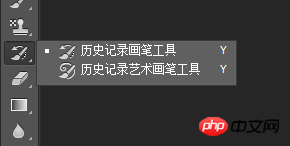
If the opened image is not saved after operation, click to restore the original image; if After saving the image and continuing to use this brush tool, the saved appearance will be restored.
Eraser Tool: Erase unwanted pixels
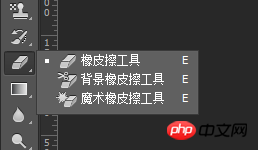
Eraser Tool: Erase unwanted pixels and restore portions of an image to their previously stored state
Background Eraser Tool: Pass Drag the mouse to erase certain areas as transparent layers
Magic Eraser Tool: Change the solid color background of the mouse-clicked area into a transparent area
Gradient Tool: Fill the image with a gradient color
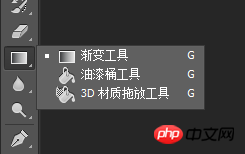
##Gradient tool: fill the image with gradient color. In the image, you need to drag the mouse along the direction of the gradient from the starting point to the end point. If you want a local gradient, you need to select the area to be filled in advance.
Paint Bucket Tool: Mainly used to fill in color, similar to the magic wand. The foreground color defaults to the filling color. The filling degree is determined by the tolerance value on the toolbar. The larger the tolerance value, the larger the filling range.
3D material drag and drop tool: mainly used for the production of 3D graphics and filling them with color.
Blur Tool: Used to blur images
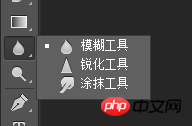
Blur tool: Partially blur the image, blur the hard edges of the image, just hold down the left mouse button and drag, generally used in medium And where the colors are too harsh.
Sharpen tool: Contrary to the blur tool, it is used to clarify the image. All pixels are sharpened within the scope of the effect, but the disadvantage is that if the degree of sharpening is too high, the component colors will be fully displayed, and the image will appear colorful.
Smear tool: Spread the color and imagine the feeling of spreading the paint. It is generally used to deal with the harsh transition between colors, and is also used in areas that are not well connected with the color. The size of the smear can be changed.
Dodge tool: Lighten local areas within the image
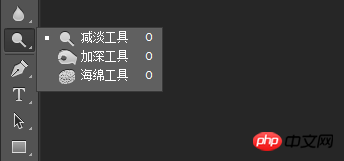
Dodge tool: Add light to the image to achieve the effect of dodging the color of the image, also called the highlight tool.
Burn tool: Contrary to the dodge tool, it darkens the image to make the image look darker and darker. It is also called the dimmer tool.
Sponge tool: Add color or added color to the image. Use the toolbar to choose whether to add color or remove color. The essence is to enhance or weaken the contrast of the color.
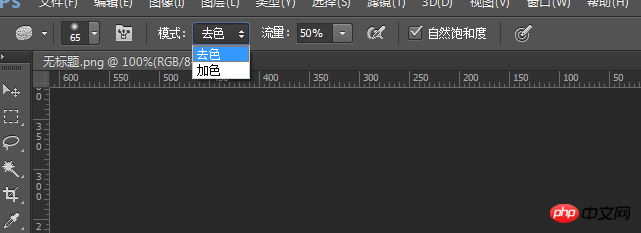
The third category: text and vector class
Pen Tool: Draw a path or image through a series of anchor points.

Pen tool: After clicking the mouse to determine an anchor point, drag the mouse to determine the next anchor point. If you need to draw an arc, release the mouse at the next anchor point and drag left and right. Mouse until you determine the arc you want. There is a control handle at each anchor point. Press the Ctrl key to adjust the arc of the control handle, press the Alt key to eliminate the control handle, and so on, connected end to end, and finally a closed path or graphic is obtained.
Free Pen Tool: Similar to the Lasso Tool. Hold down the left mouse button and drag the mouse until the end and end are connected to form a closed path or shape.
Add/Delete Anchor Point Tool; In the path that has been checked, find the anchor point and click the left mouse button to add/delete the anchor point.
Convert point tool: Convert the arc node radian to 0, that is, convert the arc to a straight line.
Text tool: used to create text
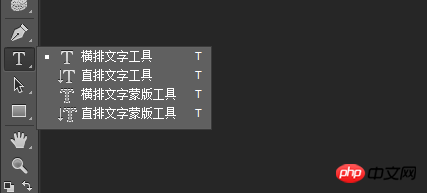
After selecting this tool, a dialog box will appear, just enter text. The text color and size on the toolbar can be changed as required.

##Path selection tool: used to select paths
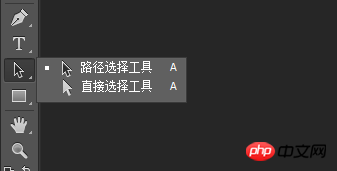
Direct selection tool: click on a node to drag and modify, or long press and drag with the mouse.
Rectangle tool: used to draw graphics
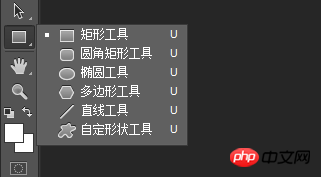
Let’s talk about the polygon tool. After clicking it, the following interface will appear in the toolbar
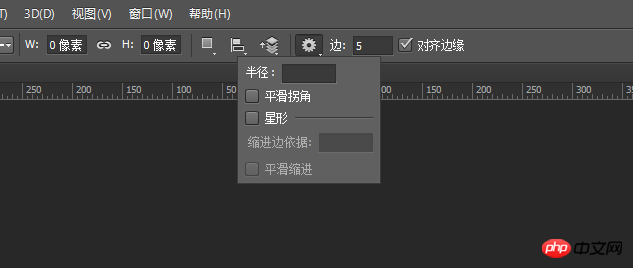 ##Enter the number of sides, enter "5" for pentagon, choose smooth corners or star shape, etc.
##Enter the number of sides, enter "5" for pentagon, choose smooth corners or star shape, etc.
Grappler Tool: Used to pan and view objects
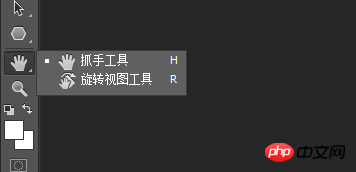 When the image cannot be fully displayed in the Photoshop file window, you can use the gripper tool to drag the image up and down to view it. You can also hold down the space bar and scroll the mouse to view up and down.
When the image cannot be fully displayed in the Photoshop file window, you can use the gripper tool to drag the image up and down to view it. You can also hold down the space bar and scroll the mouse to view up and down.
Zoom Tool: Zoom in or out of the view
 ## Generally use the shortcut keys Ctrl " " (zoom in) and Ctrl "—" (zoom out) instead.
## Generally use the shortcut keys Ctrl " " (zoom in) and Ctrl "—" (zoom out) instead.
The above is the detailed content of Learn PS with me Day 3 02: Get to know the Photoshop toolbox (Part 2). For more information, please follow other related articles on the PHP Chinese website!

Hot AI Tools

Undresser.AI Undress
AI-powered app for creating realistic nude photos

AI Clothes Remover
Online AI tool for removing clothes from photos.

Undress AI Tool
Undress images for free

Clothoff.io
AI clothes remover

Video Face Swap
Swap faces in any video effortlessly with our completely free AI face swap tool!

Hot Article

Hot Tools

Notepad++7.3.1
Easy-to-use and free code editor

SublimeText3 Chinese version
Chinese version, very easy to use

Zend Studio 13.0.1
Powerful PHP integrated development environment

Dreamweaver CS6
Visual web development tools

SublimeText3 Mac version
God-level code editing software (SublimeText3)

Hot Topics
 ps serial number cs5 permanently free 2020
Jul 13, 2023 am 10:06 AM
ps serial number cs5 permanently free 2020
Jul 13, 2023 am 10:06 AM
PS serial numbers cs5 permanent free 2020 include: 1. 1330-1384-7388-4265-2355-8589 (Chinese); 2. 1330-1409-7892-5799-0412-7680 (Chinese); 3. 1330-1616-1993 -8375-9492-6951 (Chinese); 4. 1330-1971-2669-5043-0398-7801 (Chinese), etc.
 What to do if ps installation cannot write registry value error 160
Mar 22, 2023 pm 02:33 PM
What to do if ps installation cannot write registry value error 160
Mar 22, 2023 pm 02:33 PM
Solution to error 160 when ps installation cannot write registry value: 1. Check whether there is 2345 software on the computer, and if so, uninstall the software; 2. Press "Win+R" and enter "Regedit" to open the system registry, and then Find "Photoshop.exe" and delete the Photoshop item.
 How to delete selected area in ps
Aug 07, 2023 pm 01:46 PM
How to delete selected area in ps
Aug 07, 2023 pm 01:46 PM
Steps to delete the selected area in PS: 1. Open the picture you want to edit; 2. Use the appropriate tool to create a selection; 3. You can use a variety of methods to delete the content in the selection, use the "Delete" key, use the "Healing Brush Tool" , use "Content-Aware Fill", use the "Stamp Tool", etc.; 4. Use tools to repair any obvious traces or defects to make the picture look more natural; 5. After completing editing, click "File" > in the menu bar "Save" to save the editing results.
 What should I do if the PS interface font is too small?
Dec 01, 2022 am 11:31 AM
What should I do if the PS interface font is too small?
Dec 01, 2022 am 11:31 AM
How to fix the PS interface font that is too small: 1. Open PS, click the "Edit" button on the top menu bar of PS to expand the editing menu; 2. Click the "Preferences" button in the expanded editing menu, and then click "Interface. .." button; 3. In the interface settings, set the user interface font size to "Large", set the UI scaling to "200%" and save the settings, then restart PS to take effect.
 Introduction to the process of extracting line drawings in PS
Apr 01, 2024 pm 12:51 PM
Introduction to the process of extracting line drawings in PS
Apr 01, 2024 pm 12:51 PM
1. Open the software and import a piece of material, as shown in the picture below. 2. Then ctrl+shift+u to remove color. 3. Then press ctrl+J to copy the layer. 4. Then reverse ctrl+I, and then set the layer blending mode to Color Dodge. 5. Click Filter--Others--Minimum. 6. In the pop-up dialog box, set the radius to 2 and click OK. 7. Finally, you can see the line draft extracted.
 How to automate tasks using PowerShell
Feb 20, 2024 pm 01:51 PM
How to automate tasks using PowerShell
Feb 20, 2024 pm 01:51 PM
If you are an IT administrator or technology expert, you must be aware of the importance of automation. Especially for Windows users, Microsoft PowerShell is one of the best automation tools. Microsoft offers a variety of tools for your automation needs, without the need to install third-party applications. This guide will detail how to leverage PowerShell to automate tasks. What is a PowerShell script? If you have experience using PowerShell, you may have used commands to configure your operating system. A script is a collection of these commands in a .ps1 file. .ps1 files contain scripts executed by PowerShell, such as basic Get-Help
 Complete list of ps shortcut keys
Mar 11, 2024 pm 04:31 PM
Complete list of ps shortcut keys
Mar 11, 2024 pm 04:31 PM
1. Ctrl + N: Create a new document. 2. Ctrl + O: Open a file. 3. Ctrl + S: Save the current file. 4. Ctrl + Shift + S: Save as. 5. Ctrl + W: Close the current document. 6. Ctrl + Q: Exit Photoshop. 7. Ctrl + Z: Undo. 8. Ctrl + Y: Redo. 9. Ctrl + X: Cut the selected content. 10. Ctrl + C: Copy the selected content.
 What is the ps curve shortcut key?
Aug 22, 2023 am 10:44 AM
What is the ps curve shortcut key?
Aug 22, 2023 am 10:44 AM
The ps curve shortcut key is Ctrl+M. Other curve shortcut keys: 1. Convert to point control curve, Alt+Shift+Ctrl+T; 2. Automatically align the curve, Alt+Shift+Ctrl+O; 3. Restore the default curve, Ctrl+Alt+Shift+R; 4. Copy the curve, Ctrl+Alt+Shift+C; 5. Paste the curve, Ctrl+Alt+Shift+V; 6. Adjust the curve slope, Shift+up and down arrows; 7. Adjust the curve brightness, Shift+left and right arrows





